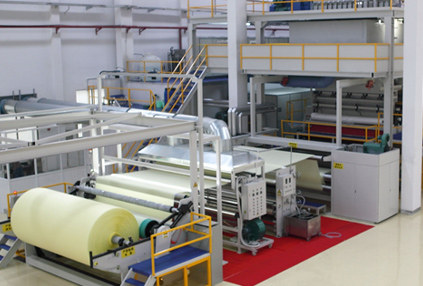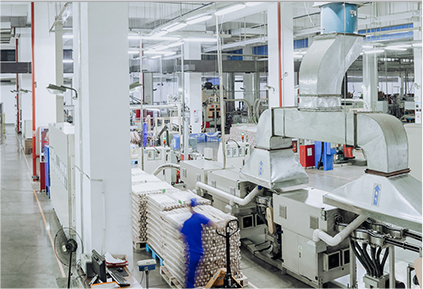+86 159 8850 8540
+86 159 8850 8540
Manufacturers utilize several platforms of nonwoven fabric formations to produce cotton nonwoven fabrics. They can use purified cotton alone or blended with any other types of natural or synthetic staple fibers, depending on the desired fabric properties.
Common practices among all all nonwoven fabric producers are opening the cotton fiber from the bale, fashioning the fibers into smaller tufts, and then forming a web of fibers. They can achieve this process by carding or air-laying (Rando-type machinery).
This process opens the fibers and individualizes them, combing them so the length of each fiber is oriented in the same direction the cylinder is moving (machine direction). At the exit, a slower wire-covered roll removes the fibers in the form of a web from the main cylinder and deposits the web on a conveyor that leads to bonding. Because the fibers are all oriented in the machine direction, fabric made of card webs is thus stronger in the machine direction.
In the air-laid (also known as dry-laid) process, the steps are much the same as carding, with wire-covered rolls that open and orient the fiber. However instead of using a wire-covered roll to remove the fibers,a wall of air blows each fiber from the cylinder. The fibers and air blow onto a rotating collection drum that has negative pressure inside. Machinery pulls the air though the drum, collecting the fibers on the outside of the drum and removing them as a web. Due to the air turbulence, the fibers are no longer in any ordered orientation (randomized). This web, when bonded, will produce fabrics with equal strength properties in all directions.
Hydroentanglement, also known as spunlace, is a process where high-pressure water jets strike the fiber web, causing the fibers to mechanically entangle with each other. This entanglement gives the fabric its strength. Hydroentangled fabrics are the most “textile-like” of all nonwovens. Since only water is used to bond these fabrics, they are very soft, drapable, and pure.
Needle-punched fabrics result from having thousands of barbed needles driven through the fiber web. The barbs on the needles grab fibers from the top of the web and push them through the rest of the web. When the needle extracts itself, the punched fibers are left in place. This fiber entanglement gives needle-punched fabrics their strength. Manufacturers can produced needle-punched fabrics in very heavy weights.
Through-air bonding produces a lofty fabric. To produce these fabrics, the fiber web passes through an oven, where hot air is pulled through the web to melt the fibers together at their intersection points. Since there is no pressure, the fabric retains the loft of the web.
Any of the nonwoven fabrics produced by the various bonding methods discussed can be treated with other chemicals to impart any desired fabric properties. Just to name a couple of examples, manufacturers may treat fabrics to make them flame-retardant or feature a water-repellent finish.
During their last processing stop, Nonwoven fabrics then convert into final products. Conversion can be as simple as slitting and cutting the fabric, as with a a wipe product, where the fabric would be cut to size, folded, and packaged. Sometimes, manufacturers may combine certain nonwovens with other nonwoven fabrics or components to create complex products such as a disposable baby diapers, which can contain 15 or more separate components!
Test for Nonwoven Fabric Mar. 16, 2023

What is Nonwoven Fabric Mar. 16, 2023

Nonwoven Fabric Manufacturing Mar. 16, 2023

Kinds of Nonwoven Fabric Mar. 16, 2023
